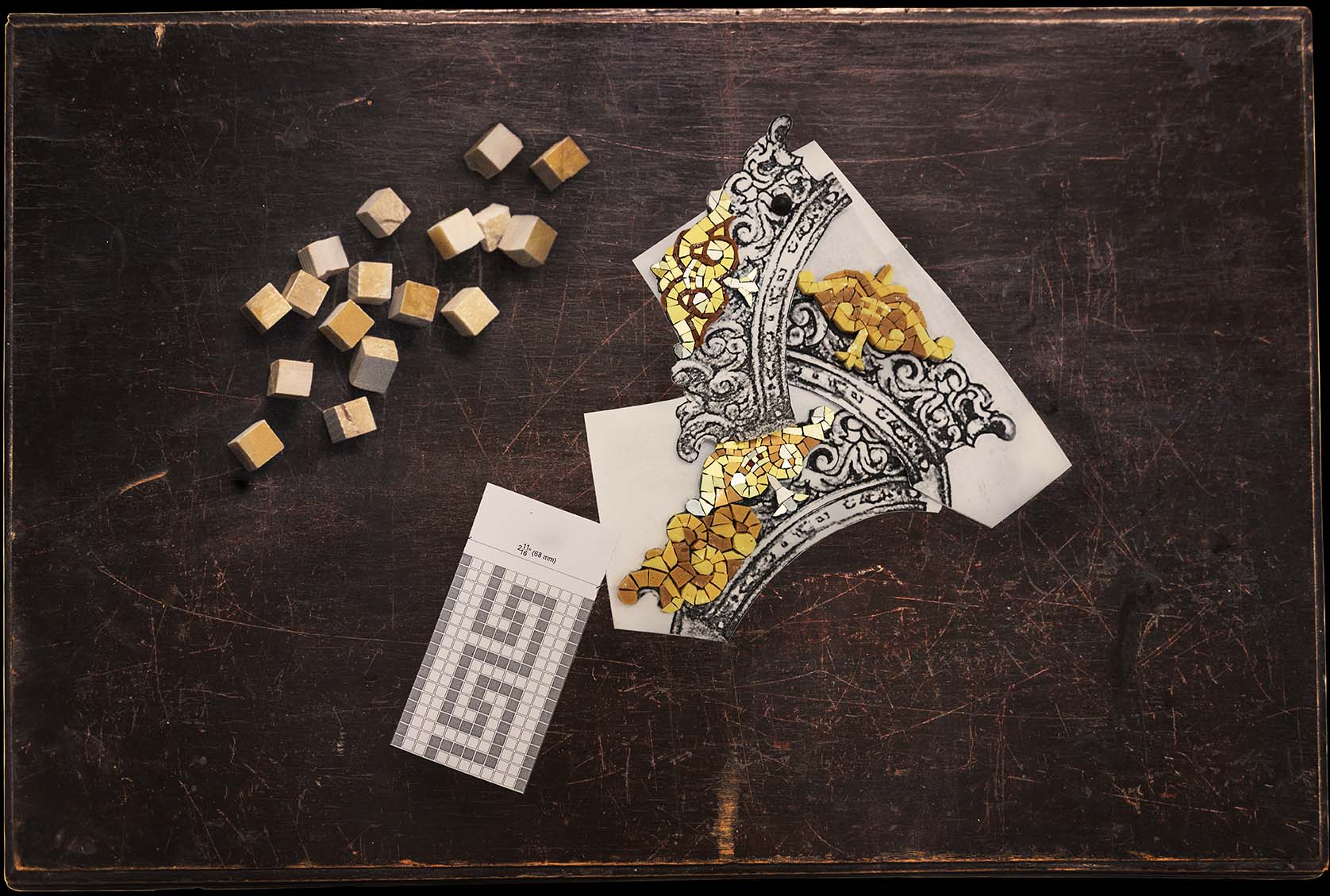Technique
Giacomo Raffaelli is considered the inventor of this technique developed in Rome at the end of 18th century. The mosaicist creates a silica-based compound fused with metal oxides that can be threaded: the results are very slender sticks, called “threads”, that are cut into sections to form tiny tiles that are assembled. Raffaelli began creating micromosaics in 1775. During that period, the most popular subjects were neoclassical themes, followed by monuments and ruins, then flowers, animals, scenes of popular life. Workshops produced fine souvenirs for aristocrats on the fashionable Grand Tour. Today, tiles made of Murano enameled glass threaded and transformed into sticks are used, or classical enamel tiles used for canonical compositions are adapted.
 IT
IT  EN
EN  RU
RU  ES
ES  AR
AR  ZH
ZH 







